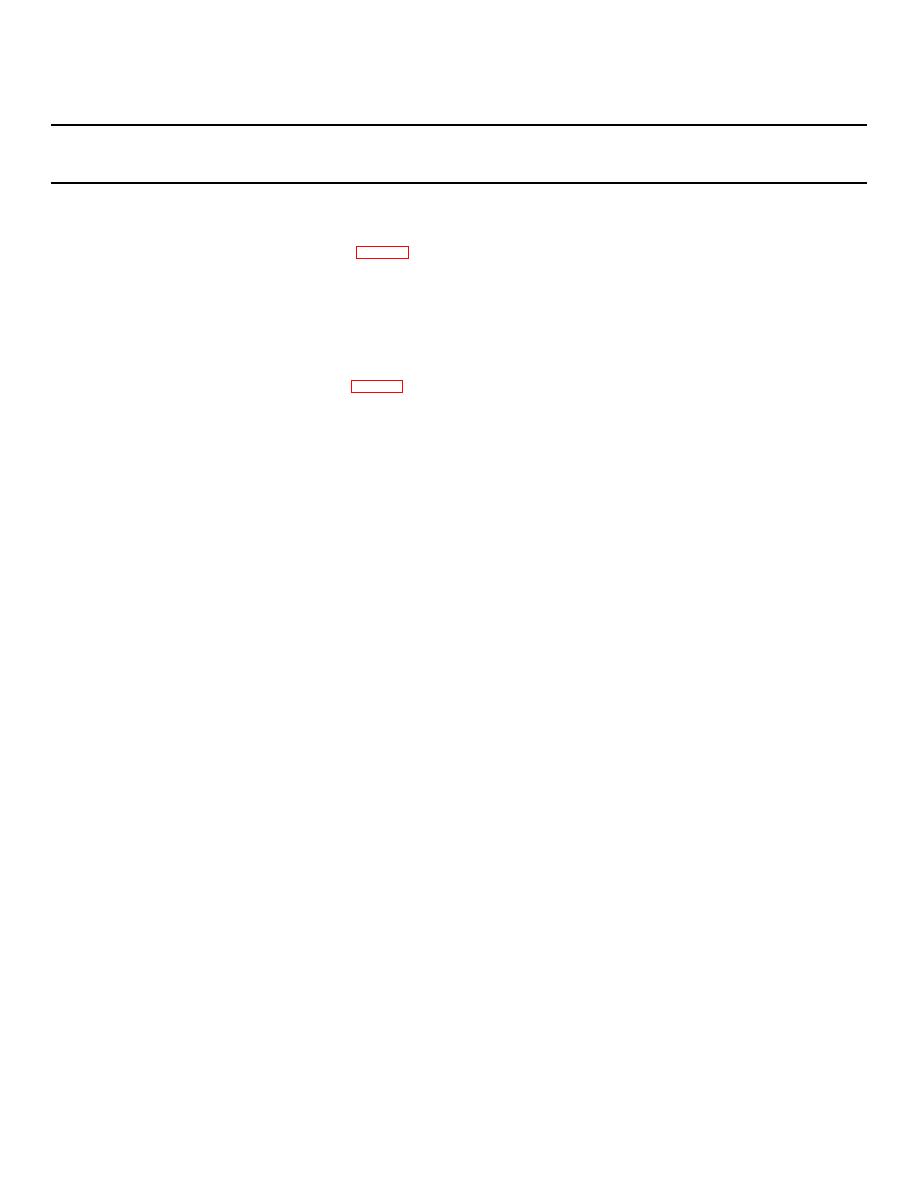 |
|||
|
|
|||
|
Page Title:
Section III. GENERAL MAINTENANCE |
|
||
| ||||||||||
|
|
 TM 5-4320-234-34
Table 2-1. Troubleshooting -- Continued
MALFUNCTION
TEST OR INSPECTION
CORRECTIVE ACTION
CENTRIFUGAL PUMP CONTINUED
Replace all bearings that are damaged.
(1)
Press bearings (8 and 10, fig. 2-20) onto the Impeller shaft (11). Secure bearings to the shaft with retaining ring (7 and 9).
(2)
Press grease seal (12) into the bearing housing (13) and grease seal (5) Into the bearing cap (4) before installing the shaft
and bearings in the bearing housing.
(3)
Pack the bearings and bearing cap with ML-G-10924 grease; pack the area between the bearings in the bearing housing
l
three-fourths full of the same grease.
(4)
Press the shaft and assembled bearings into the housing until the bearings are seated. Install the preformed packing (6) and
bearing cap (4). Secure the bearing cap with the capscrews (2) and lockwashers (3), tightening them evenly In increments
until all are secure.
(5)
Install coupling half (13, fig. 2-19) on the drive plate (11); secure with six capscrews (10) and lockwashers 1).
(1
(6)
Install drive plate (12) on the engine flywheel and secure with capscrews (8) and lockwashers (9).
(7)
Install collar to coupling half and secure with retaining ring (5) and lockwire (4).
(8)
Install coupling half (7) and collar (6) on the end of the impeller shaft so that the keyway engages the key on the shaft.
Secure with setscrew (3).
(9)
Install three cushions (2) on each coupling half; secure each with sleeve (1).
(10)
Place a sling around the pump and install pump onhe chassis. Install shims (8. 9, and 10) having die same thickness as
t
the ones removed. Slide the pump into engagement with the engine so that the coupling halves are properly alined.
(11)
Secure the bearing housing to the flywheel housing with nuts (2) and lockwashers (3). Secure the pump feet to the chassis
frame with capscrews (6), lockwashers (5) and nuts (4).
Section III. GENERAL MAINTENANCE
2-5. General
d.
Protect disassembled parts from blowing
sand and dust which could later cause rapid wear of the
This section contains general maintenance
gears, bearings, and machined surfaces.
procedures which are the responsibility of direct support
and general support maintenance personnel.
The
2-7. Care of Bearings
paragraphs contained herein describe general practices
WARNING
you will find applicable to several assemblies or
Clean all parts in a well-ventilated area.
components of the pumping assembly which would
Avoid inhalation of solvent fumes and
otherwise have to be repeated in each section of the
prolonged exposure of skin to cleaning
manual assigned to those assemblies and components.
solvent. Wash exposed skin thoroughly.
WARNING
Dry cleaning solvent (fed. spec. P-D-680)
Clean all parts in a well-ventilated area.
used to clean parts is potentially
Avoid inhalation of solvent fumes and
dangerous to personnel and property. Do
prolonged exposure of skin to cleaning
not use near open flame or excessive heat.
solvent. Wash exposed skin thoroughly.
Flash point of solvent is 100 to 138 F (38 to
Dry cleaning solvent (fed. spec. P-D-680)
59 C).
used to clean parts is potentially
a.
Clean ball and roller bearings by placing
dangerous to personnel and property. Do
them into a wire basket and then immersing them into a
not use near open flame or excessive heat.
container of fresh cleaning solvent (fed. spec. P-D-
Flash point of solvent is 100 to 138 F (38 to
680). Agitate the bearings in the solvent to remove all
59 C).
traces of old lubricants.
2-6. Cleanliness
b.
After the bearings are cleaned, allow them to
a.
Take care to ensure that your work area is
air dry.
clean before starting to disassemble the engine or pump
c.
Dip the cleaned and dried bearings in clean
parts.
engine oil and immediately wrap them in lint-free paper
b.
Clean the exterior of the engine or pump
to prevent the entry of dust and dirt.
before starting disassembly to prevent dirt from entering
2-8. Seals-and Gaskets
the bearings or the other critical contact surfaces. Clean
the exterior of engine components with a cloth
dampened with cleaning solvent (fed. spec. P-D-680).
Replace seals and gaskets of all components you
disassemble. The use of new gaskets and seals will
c.
If you clean the parts with compressed air,
greatly reduce the possibility of leaking and will help
make sure the air is free from dirt and contaminants.
prevent the entry of dust and dirt after reassembly.
2-28
|
|
Privacy Statement - Press Release - Copyright Information. - Contact Us |